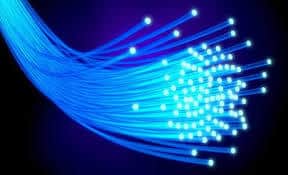We have been experiencing a variety of strange internet speed phenomena here lately, which our ISP (and electrical stores, even Google) have been quite hopeless about. I have struggled away with it, sometimes doubting my own sanity (a separate issue really!), and had finally come to the conclusion that I had radio interference with my wireless internet connections. This was finally confirmed by recourse my friend, the excellent Adam B, who should really been my first port of call I realise now, as he knew all about it, and has been able to give me encyclopaedic advice in how to fix it. In brief: we had such strange things as quite intermittent speeds, varying oddly over different devices, including dropouts, and so on. Most modems/routers operate on the 2.4 gigahertz frequency. So do a lot of other gadgets (including Bluetooth devices, including hearing aid controllers) such as microwave ovens and wireless phones. If you have two routers (as we have (one for wireless NBN, the other for a DSL connection) they MUST be separated by preferably at least 5 metres. If some of your wireless computers (etc) are old(ish) they will be unable to connect at some NBN speeds, so the router will throttle back for them, affecting other newer devices. There are a variety of standards here (a,b,g, n etc). ‘N’ is good. Or can get at least 50 megs speed from such devices but NOT if you also have a slower device connected wirelessly. Some computers you can alter the Advanced Configuration settings of the wireless adapters (eg to switch to ‘n’, or ‘tweak’ in other ways); some you will have to switch the wireless card (because they do not even have ‘G’ – and ‘A/B’ will not get you beyond about 10 Megs) or plug in a USB wireless card. If all your devices have ‘N’, then if there is no other interference the router should switch to this mode and send and transmit at NBN speeds (in our case about 50 down and 25 up!) We have had to separate the modems, buy new phones (which run on 1.8/9 Gigs – fortunately these are usually cheaper than the 2.4 models!), and we need to be VERY careful about what other wireless/Bluetooth devices we have. Also important: the channels on the two routers need to be set as far apart as possible: 1&5 or 6&11 as the radio signals can ‘blur’ over from one close channel to another. I hope this info helps. Adam would be able to explain it better, but there doesn’t seem to be much other help out there otherwise. NB: a 5 Gig router might overcome some of these problems but apparently this frequency does not propagate well, so your range will be quite limited – it might not go from your lounge room to your kitchen, for example. Apparently those devices which re-transmit (eg television signals) can also cause internet mayhem. Most important: keep transmitters a goodly distance apart, and on different frequencies – have as little stuff on 2.4 Gigs as possible. You might be chucking quite a lot of electronic stuff!


